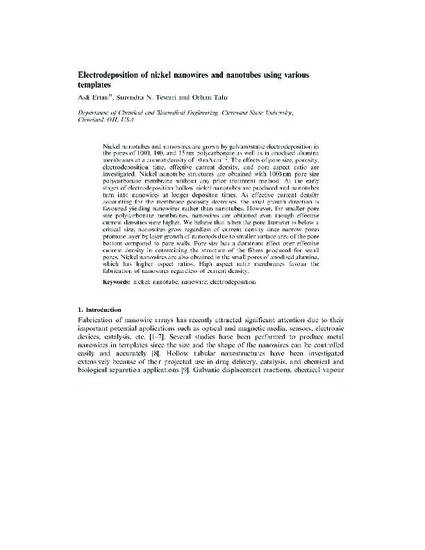
Nickel nanotubes and nanowires are grown by galvanostatic electrodeposition in the pores of 1000, 100, and 15 nm polycarbonate as well as in anodised alumina membranes at a current density of 10 mA cm-2. The effects of pore size, porosity, electrodeposition time, effective current density, and pore aspect ratio are investigated. Nickel nanotube structures are obtained with 1000 nm pore size polycarbonate membrane without any prior treatment method. At the early stages of electrodeposition hollow nickel nanotubes are produced and nanotubes turn into nanowires at longer depositon times. As effective current density accounting for the membrane porosity decreases, the axial growth direction is favoured yielding nanowires rather than nanotubes. However, for smaller pore size polycarbonate membranes, nanowires are obtained even though effective current densities were higher. We believe that when the pore diameter is below a critical size, nanowires grow regardless of current density since narrow pores promote layer by layer growth of nanorods due to smaller surface area of the pore bottom compared to pore walls. Pore size has a dominant effect over effective current density in determining the structure of the fibres produced for small pores. Nickel nanowires are also obtained in the small pores of anodised alumina, which has higher aspect ratios. High aspect ratio membranes favour the fabrication of nanowires regardless of current density.

This work was supported by US Department of Energy (contract# DE-FC 36-04ER14007).